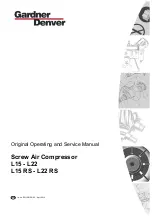
9
Operating the generator
Operation as a welder
1. Before
operating the welder, follow all instructions in the “Before starting” section.
2.
Refer to engine manufacturer’s instructions and start the engine, operate on high speed while
welding.
3. Ensure the welding leads are plugged into the proper jacks in the front panel
– the positive lead in the
positive jack; the ground lead in the negative jack.
4. Place the proper electrode for the work at hand in the holder at the desired angle.
5. Strike and arc, then move the electrode along the piece to be welded. As a puddle of molten metal
forms on the work, move the electrode in the direction to be welded. Feed the electrode into the
puddle.
6. To stop welding lift the electrode.
If the arc will not hold, or if it difficult to start, increase the amperage by changing the rheostat.
If the electrode “sticks,” twist back and forth, and pull upward, until it breaks loose from the work.
If the electrode will not break free quickly, remove the holder from the end of the electrode, then
break the electrode free.
Operation as a generator
1.
Before operating the generator follow all instructions in the “Before starting” section.
2. Place the welding rheostat in the maximum amperage position.
3. Disconnect the welding cable.
4.
Refer to engine manufacturer’s instructions and start the engine.
5. Run engine on high speed only.
Although the generator can be used for AC-power during welding, it is strongly recommended not to weld
while using the AC generator
.
General Maintenance
The welder/generator should be run at least once a month for a few minutes to keep all components in
operating condition. All ball bearings are sealed and require no servicing. There is no maintenance
required on any other components of the welder/generator.
Store the welder/generator in a warm, dry location.


































